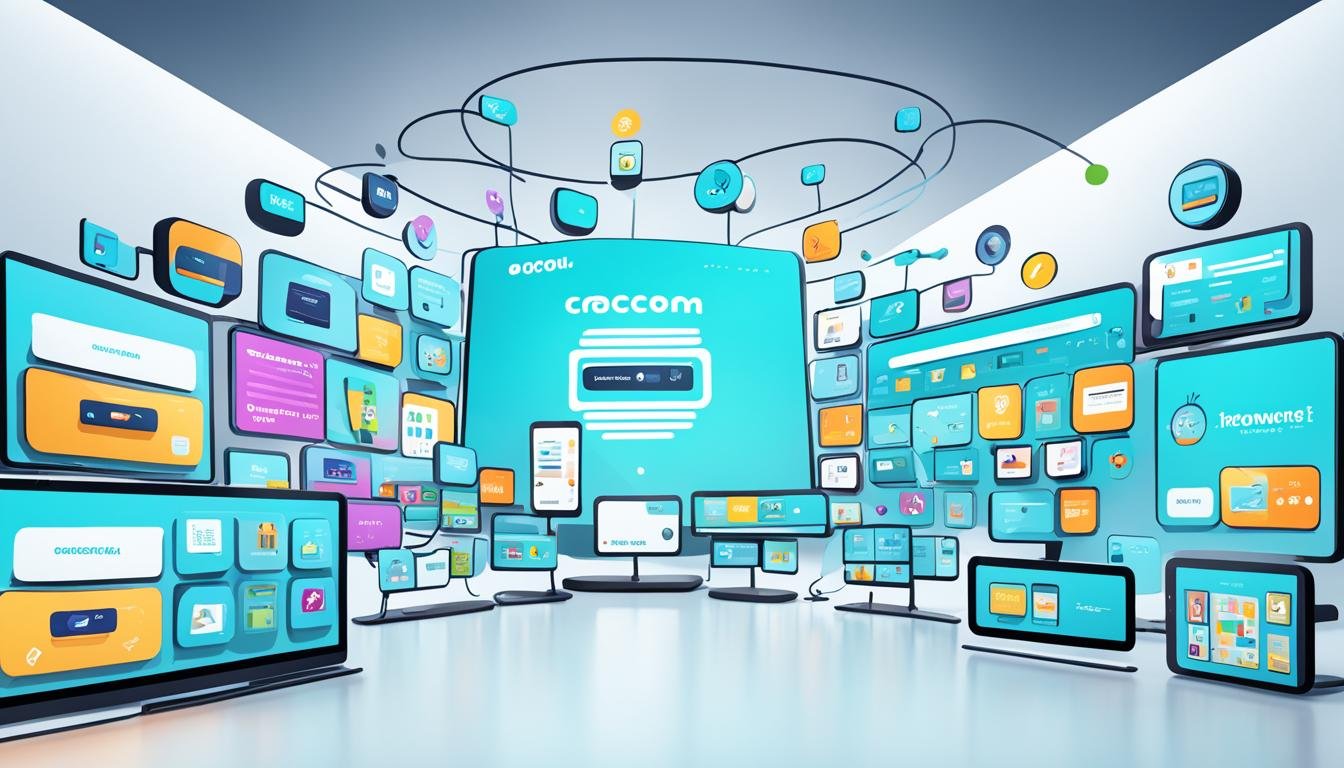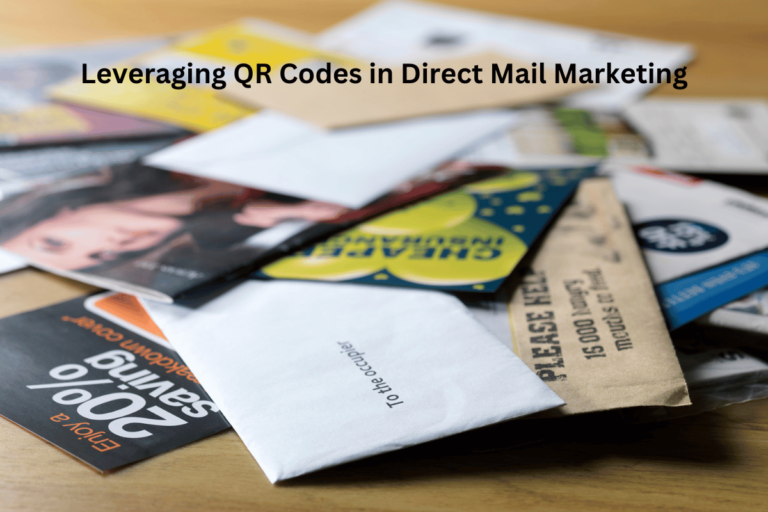Omnichannel Marketing Strategies: Integrating multiple channels.
Did you know that omnichannel campaigns have a 287 percent higher purchase rate than single-channel ones? This shows how crucial it is for businesses to boost customer engagement. Today, marketing has changed a lot because of our connected world. Omnichannel marketing now connects all customer touchpoints, making the shopping journey smooth from online to in-person.
Brands that use both online and offline channels can give customers a consistent shopping experience. Now, people often use different channels to connect with businesses. This omnichannel approach makes shopping better, helps businesses grow, and builds stronger customer ties.
Key Takeaways
- Omnichannel strategies offer a purchase rate 287 percent higher than single-channel campaigns.
- Integration of multiple channels leads to improved brand recall and customer loyalty.
- Consistent customer experiences across all touchpoints are a hallmark of successful omnichannel marketing.
- Unified customer data is crucial for delivering personalized and seamless marketing efforts.
- Enhanced customer relationships and increased revenue are notable benefits of omnichannel marketing strategies.
Understanding Omnichannel Marketing
Omnichannel marketing is a way to connect with customers across all touchpoints, both online and offline. It makes shopping smooth and consistent, which builds loyalty and boosts sales. At its heart, it puts the customer first, uses data well, and offers content that matches what customers like.
Definition and Importance
Omnichannel marketing is a strategy that makes shopping smooth for everyone. It uses many channels to give customers a personal touch at every step. Today, 87% of retailers see it as key to their success. Plus, 92% of customers want the same shopping experience everywhere they go.
Core Characteristics
Good omnichannel marketing has a few main traits:
- Customer-Centric Approach: Putting the customer first leads to a better experience. In fact, 67% of customers leave because of a bad experience.
- Integrated Data: Combining data from all channels is crucial. Shine, a company for freelancers, got an 80% conversion rate by doing this.
- Personalized Content: Making marketing personal gets better results. Emails that are tailored to customers bring in 62.2% more orders. Personalized marketing keeps customers coming back.
Thanks to technology, businesses can now have a strong brand presence everywhere. By understanding the customer journey, companies can offer a marketing experience that’s engaging, consistent, and personal. This leads to happier customers and more loyalty.
Main Sales and Marketing Channels
In today’s market, businesses must use many sales and marketing channels to keep customers engaged and run smoothly. Knowing how to use physical stores, digital platforms, and social media is key. This helps companies make a strong omnichannel marketing plan.
Physical Stores
Physical stores are still vital for businesses. They let customers get direct feedback and personal interaction. This builds loyalty and trust. Even with more digital options, physical stores are still important in a multichannel marketing plan.
Digital Platforms
Websites and mobile apps keep businesses open 24/7 online. They are the heart of a company’s online shopping strategy. They make it easy for customers to shop anytime, anywhere. A good omnichannel marketing plan on these platforms means delivering content that feels personal. This leads to more sales and happier customers.
Social Media
Social media is now a key part of marketing. With more people using social media to get help from companies, using these platforms well can really boost customer engagement. Sites like Facebook, Instagram, and LinkedIn let brands talk to users and keep an eye on their reputation. Social media also helps spread the word about brands and can lead customers to buy on other channels.
Using physical stores, digital platforms, and social media together means businesses can reach customers everywhere. A strong multichannel marketing plan does more than just make customers happy. It also makes them loyal and helps businesses succeed over time.
Differences Between Omnichannel and Multichannel Marketing
Knowing the difference between omnichannel and multichannel marketing is key for businesses wanting to improve their marketing. Multichannel marketing looks at the customer’s journey in each channel separately. Omnichannel marketing, on the other hand, connects all channels into one smooth shopping experience.
Customer Experience
The main difference lies in the customer experience. With multichannel marketing, each channel works on its own. This can lead to different experiences when customers move from one channel to another. Omnichannel marketing, however, links all channels together. This ensures customers get a consistent and personalized experience at every touchpoint.
For omnichannel marketing to work well, it needs a lot of resources and the right technology. This includes tools like a CMS, CDP, and DAM. These help businesses understand their customers better and deliver content and marketing that matches what customers want.
System Integration
System integration is another key difference. Omnichannel marketing needs systems to work together well for real-time data and deep customer insights. By integrating systems, companies can automate marketing and make processes smoother, improving the customer experience.
Meanwhile, multichannel marketing is simpler and doesn’t need as many resources. It lets companies manage each channel separately. But, it can lead to data that’s not connected and a poor understanding of the customer’s path.
For instance, HSBC’s WhatsApp campaign got a 91% engagement rate and a 1.4% conversion rate. It made over 20 million euros in revenue. This shows how omnichannel strategies can lead to big business wins by offering personalized customer interactions.
Customer-Centric Approach
In today’s market, focusing on customers is key. Using *personalized marketing* and understanding the *customer journey* helps brands connect better with their audience. This approach boosts *customer engagement* and loyalty. Research shows that 89% of top brands focus on helping customers and predicting what they want to grow.
Personalized Marketing
*Personalized marketing* is great for keeping customers interested. Brands that use their own data for marketing see big gains in revenue and cost savings (Google). This method lets companies send content and offers that match what customers like. People now want these custom experiences, with 80% of US adults looking for personal touches from stores across different platforms.
Customer Journey Mapping
Knowing the *customer journey* is vital for good marketing. Most B2C customers use 3 to 5 channels when buying or solving a problem. When looking for a hotel online, the average person checks out almost six different sites and apps. By mapping these journeys, marketers can find important moments to connect with customers. For example, Sephora found that customers who visited their website after a store trip were three times more likely to buy something, making their orders 13% higher.
In summary, focusing on customers with *personalized marketing* and detailed *customer journey mapping* can greatly improve the customer experience. This leads to more loyalty and engagement.
Integrating Data Across Channels
It’s key for businesses to link customer info across many channels for a smooth experience. Using data-driven marketing and tech helps make sure every touchpoint is connected and up-to-date.
Importance of Data Integration
Now, over 50% of customers switch between three to five channels to connect with a business. By linking data across these channels, companies get a full view of the customer’s path. This lets them use tools like geofencing and BOPIS to make shopping easier.
It also means they can send out consistent messages. This is vital for a strong brand image.
Technological Requirements
Good data integration needs advanced tech. CRM systems and inventory software are crucial for tracking customer interactions. Tools like Zapier and MuleSoft help bring data from different places together.
This makes marketing more personal and effective. Marketing automation tools also help by automating tasks and giving useful insights.
Choosing the right tech is crucial for good data-driven marketing. Mid-market companies use about 185 different apps, showing how complex data integration can be. Yet, only 35% of companies feel they’re doing well with omnichannel personalization.
To improve, companies must keep analyzing customer feedback and data. This helps refine their omnichannel strategies.
Creating a Seamless Customer Experience
In today’s market, making the customer experience smooth is key for all businesses, big or small. Studies show that customers often check out a business 10 times before buying. This shows how vital it is to be consistent at every touchpoint.
Consistency Across Touchpoints
For a smooth customer experience, being consistent is key. Customers should see the same brand image on your website, social media, or in stores. This builds trust and makes the experience better. Tools like social media listening software and data analytics help make sure your message is the same everywhere.
Unified Branding
Having a unified brand is essential for a smooth experience. Your brand’s voice, look, and values must be the same everywhere. This means your marketing online and in stores should match. Being consistent helps keep customers loyal and gives them a steady experience with your brand.
Tools like HootSuite, Google Analytics, and GetClicky give insights into what customers like. By using these insights in your marketing, you can make it more personal. Remember, customers may go through many channels before buying, so making the experience smooth is crucial for their happiness and loyalty.
Benefits of Omnichannel Marketing Strategies
Omnichannel marketing strategies offer many benefits for businesses. They change how companies talk to customers. By using many channels together, businesses can make customers more loyal, buy more, and stay with them longer.
Increased Customer Loyalty
Using an omnichannel approach helps a lot with increased customer loyalty. Brands give the same good experience on all platforms. This makes customers want to come back often. By offering a single shopping experience, companies build stronger bonds with customers. This leads to a loyal customer group.
Recent stats show that companies using omnichannel strategies grow a lot. Some go from $1 million to $100 million in revenue.
Higher Purchase Rates
Omnichannel marketing also means higher purchase rates. Personalized experiences make customers less likely to leave a website or abandon their cart. They can easily switch between platforms like stores, websites, apps, and social media. This makes shopping better for them.
This easy movement between channels helps increase customer happiness and more sales. By using omnichannel marketing, businesses keep customers and make their brand more visible. A consistent message on all channels makes customers remember the brand. This leads to greater customer lifetime value.
Good omnichannel strategies are key for long-term growth and success in business.
Challenges in Implementing an Omnichannel Strategy
Implementing an omnichannel strategy comes with big challenges. These include a lot of technology investment and the need to align strategies across different departments. It’s a complex task for organizations.
Technology Investment
Getting an omnichannel strategy right means spending a lot on technology investment. It’s important to connect different systems for a smooth customer experience. But, this can be expensive and take a lot of time.
Companies like Sam’s Club have seen big benefits from their omnichannel efforts. They spent more and saw mobile purchases triple, growing by 25% each month. This shows the value of investing in new technologies for mobile and online shopping.
Strategy Alignment
Getting all departments to work together is another big challenge. A survey found only 3% of marketers feel fully connected with their systems and data across all solutions. If departments don’t work together well, it can lead to mixed messages and inefficiencies.
For a successful omnichannel strategy, it’s key for marketing, sales, and customer service teams to be in sync. This requires a lot of planning and coordination. But, it’s crucial for a unified and effective approach.
Real-World Examples of Omnichannel Strategies
Many businesses have found success with omnichannel strategies across different industries. These stories show how companies use new tech and customer insights to boost sales and engagement. Let’s look at some examples and their amazing results.
Success Stories
Bristol Myers Squibb is a great example. They have a strategy with four key parts: inputs and strategy, a decision engine, designing the program, and delivery. This helped them understand customer behavior and improve their messages.
Another example is Pollack Services Group. They use data to make messages personal, helping customers move smoothly across different channels. This has greatly increased customer satisfaction and engagement.
Case Studies from Various Industries
Parabolic focuses on offsite media, promotions, and consistent messages across all channels. This strategy has boosted customer engagement a lot, showing the strength of a good omnichannel plan.
CMR Surgical combines digital and in-person interactions with QR codes, sign-ins, and lead scoring. This makes their messages more personal and helps them measure success better.
In retail, Zumiez was ranked number one in the “Top 100 Omnichannel Retailers” in 2017. They scored 100 points for their smooth experience across many channels.
Research shows that 81% of U.S. smartphone users use their phones in stores to check prices, get product info, and find items. OYO Rooms saw an 8X increase in engagement with an omnichannel platform. Target’s use of Pinterest’s Lens in their app led to a nearly 10% sales boost by offering a seamless experience.
These stories and studies prove that businesses in many sectors use omnichannel marketing to improve customer engagement, sales, and give a consistent, personalized experience.
Leveraging Marketing Automation for Omnichannel Success
Marketing automation changes the game for omnichannel success by linking different channels together. This lets businesses send personalized messages to customers on a large scale. It makes sure customers get messages that match their interests and actions. By automating tasks, companies can keep things running smoothly and focus on making customer experiences better.
A study by HBR showed that 73% of shoppers check out different channels when shopping. This highlights the need for a strong omnichannel strategy. With marketing automation, businesses can give customers a consistent experience across stores, online, and social media. For example, automated systems can send reminders about items left in shopping carts, helping to cut down on the high cart abandonment rate in online shopping.
Marketing automation helps improve efficiency by letting marketers manage many channels from one place. It uses AI to suggest products, boost customer interaction, and increase sales. Companies using more channels see a big jump in sales and customer engagement compared to those using just one.
Marketing automation uses AI to make customer interactions more personal. AI can create content automatically, keeping messages consistent across all touchpoints. Retailers like Woolworths and Benefit Cosmetics have seen more engagement and sales by using AI for recommendations. Tools like Bloomreach Engagement use smart algorithms to guess what customers might like, making shopping smoother and more enjoyable.
HubSpot says customers usually interact with a brand several times before buying. Marketing automation helps plan these interactions carefully, making sure each one adds value. This approach keeps customers coming back and boosts sales.
The Simplicity Index shows that 64% of consumers are willing to pay more for a simpler shopping experience. Marketing automation makes shopping easier and more fun for customers. Automated emails about abandoned carts can turn some of those lost sales back into revenue.
In short, marketing automation is key for a successful omnichannel strategy. It keeps things running smoothly, offers personalized marketing, and makes the customer experience smooth across all channels.
Conclusion
Using integrated marketing strategies is key for brands today. They help make the customer journey better and keep the brand consistent. By focusing on the customer, brands can use omnichannel marketing to meet what customers want.
Customers often use different devices and channels to interact with brands. This is why having an omnichannel customer base is valuable. Such customers have a 30% higher lifetime value, showing the strategy’s power for long-term success.
Omnichannel marketing campaigns work well across many platforms. They lead to a 250% higher purchase and engagement rate than single-channel efforts. This approach uses data and technology to make the customer journey better. It helps create personalized experiences that build stronger relationships and increase sales.
Brands like Starbucks, Nike, and Amazon have seen great success with these strategies. They offer a smooth customer experience across all channels.
In North America, omnichannel retail is huge. 87% of retailers see its value. This shows how important it is for meeting customer needs and building loyalty.
By focusing on brand consistency and optimizing the customer journey, businesses can do well in today’s digital world. They can grow sustainably and make the most of their investments.
Source Links
- Multichannel vs Omnichannel: What is the Difference?
- Omnichannel Strategy: How to Create an Integrated Customer E
- Omnichannel Marketing: A Complete Guide for 2024 and Beyond
- Omnichannel Marketing Definition & Examples | Mailchimp
- Omnichannel marketing 101: What it is and why it matters | Zapier
- What is Omni-Channel? 20 Top Omni-Channel Experience Examples
- 4 Powerful Omnichannel Sales & Marketing Examples
- Council Post: Omnichannel Marketing: The Benefits And How To Get Started
- Omnichannel vs. Multichannel: What’s the Difference?
- Omnichannel vs. multichannel: What’s the difference
- Council Post: Omnichannel Versus Multichannel Marketing: Which Is Right For Your Brand?
- Why Omnichannel Marketing Is the Secret to a Customer-Centric Strategy
- What is omnichannel marketing?
- Omni-Channel Marketing: Seamless Customer Experience Across Channels
- A Guide to Omnichannel Analytics & Reporting
- How to create an omnichannel marketing strategy | TechTarget
- Omnichannel marketing: 5 steps to a seamless customer experience
- Ways to Implement A Seamless Omnichannel Experience Strategy
- Omnichannel Marketing: Key Advantages + Metrics
- 6 benefits of omnichannel marketing | TechTarget
- What Are the Benefits of Omnichannel Marketing?
- 7 Major Challenges in Omnichannel Marketing and How to Fix Them
- 6 challenges of omnichannel marketing | TechTarget
- What are the Challenges of Implementing an Omnichannel Strategy?
- 5 real-world examples of omnichannel marketing | TechTarget
- Omnichannel Marketing Examples – Implemented by 10 Amazing Brands
- Unlocking the True Power of Omnichannel Marketing Automation
- How Can Retailers Leverage Omnichannel Marketing?
- Making the Most of AI in Omnichannel Marketing
- 36 Vital Omnichannel Marketing Statistics To Know (2024)
- What Is Omnichannel Marketing? Definition, Importance, and Examples
- Omnichannel Marketing Strategies for Maximizing ROI.




